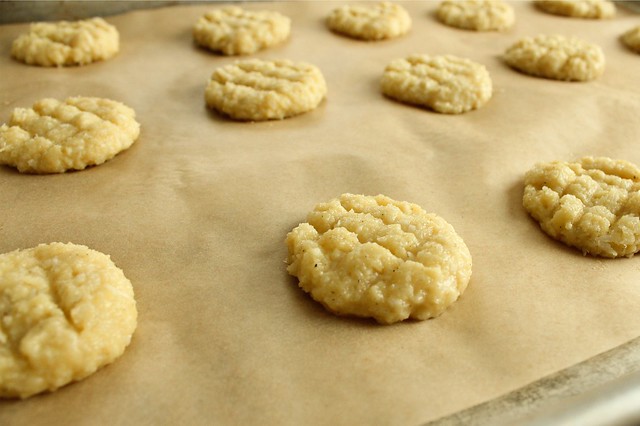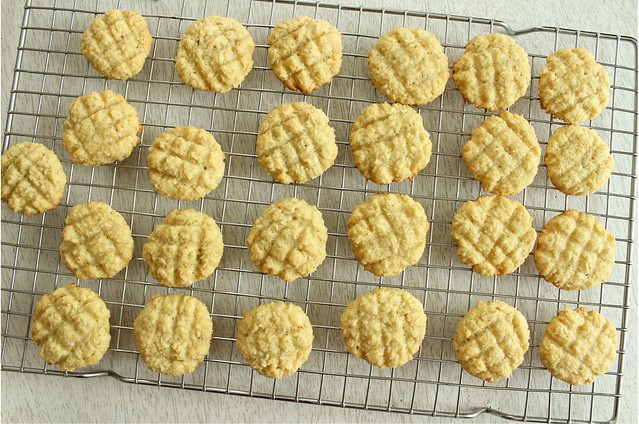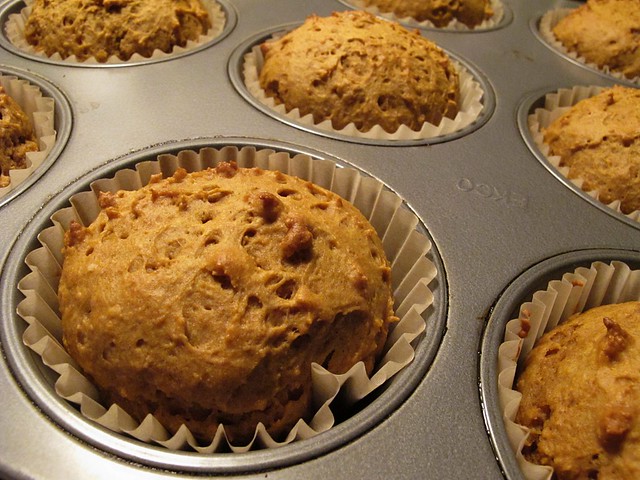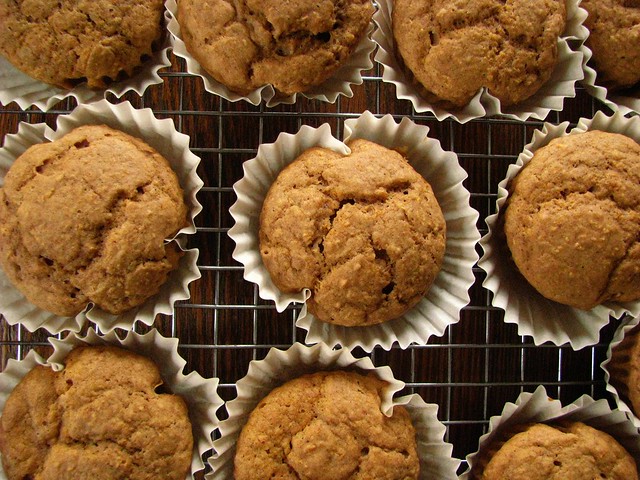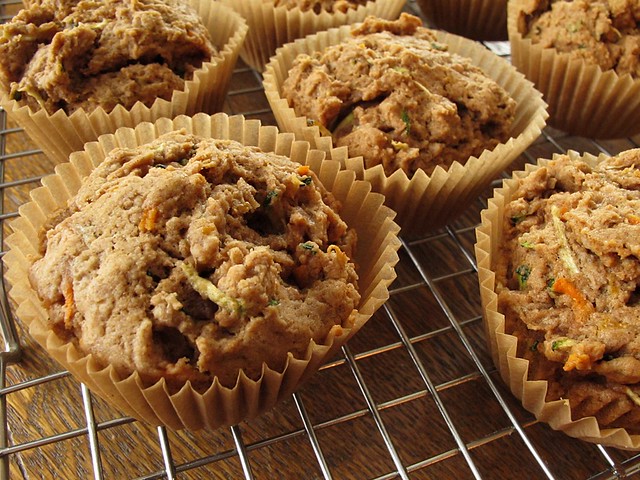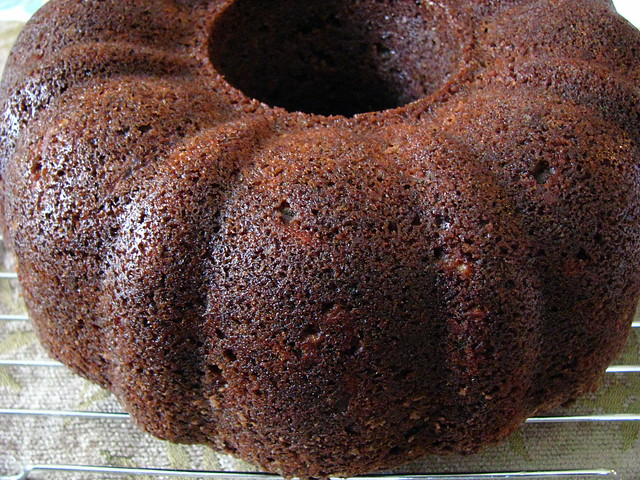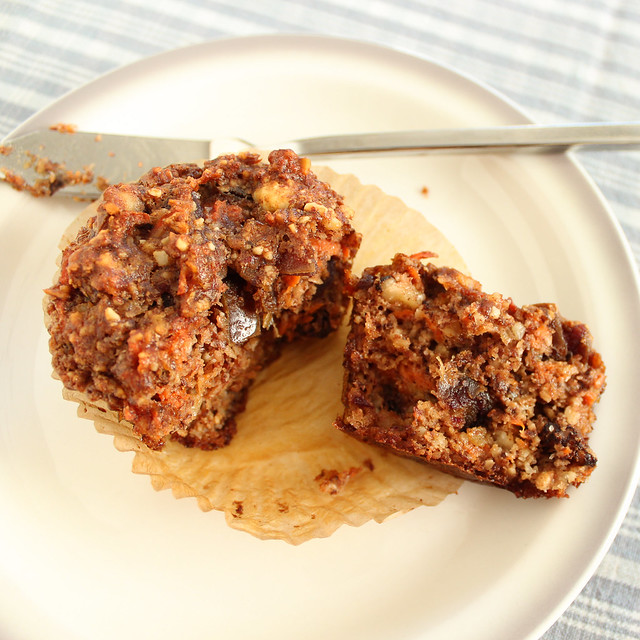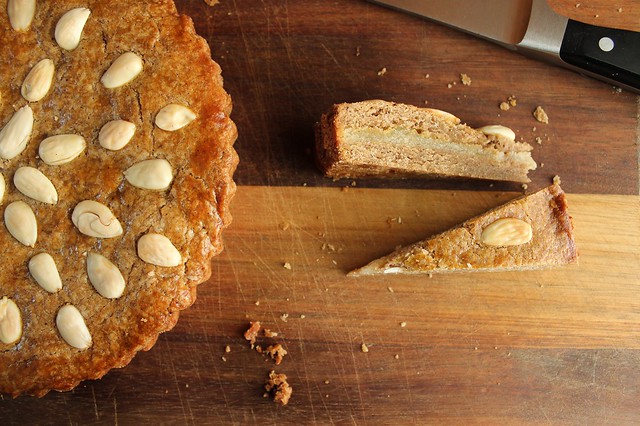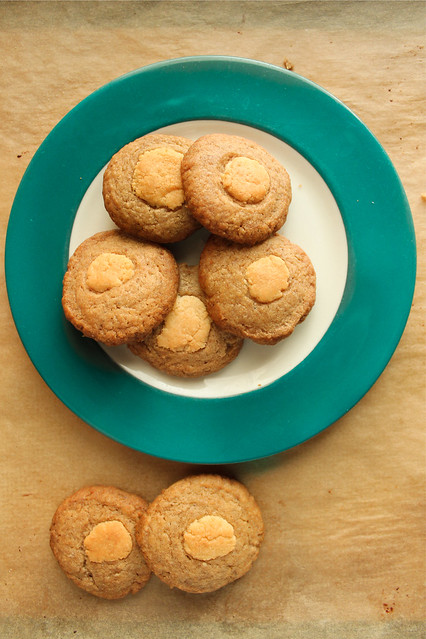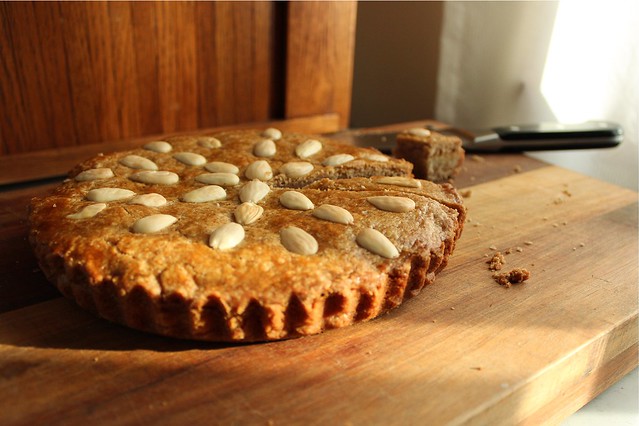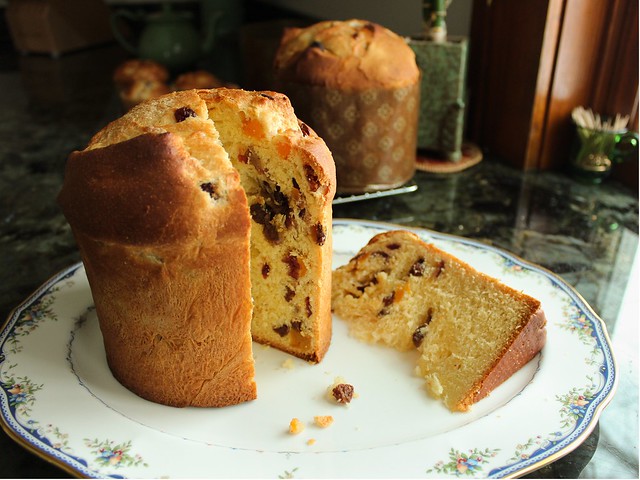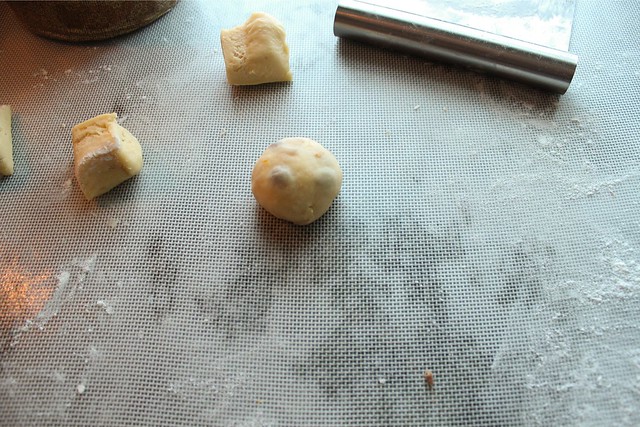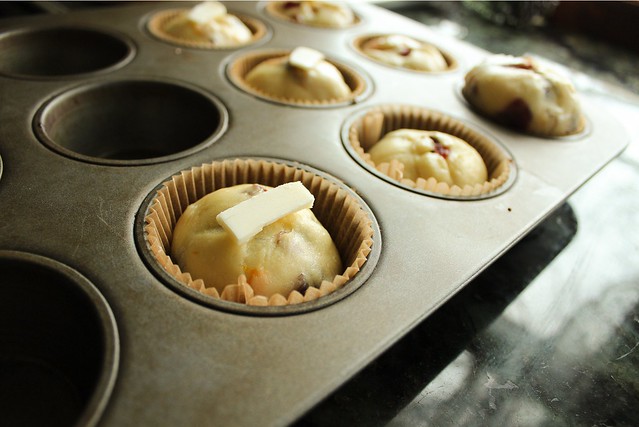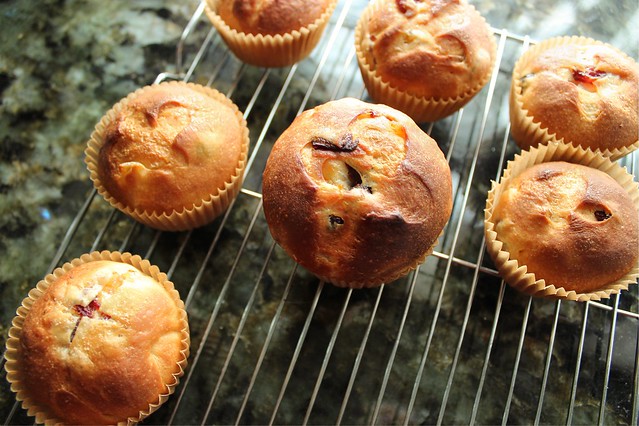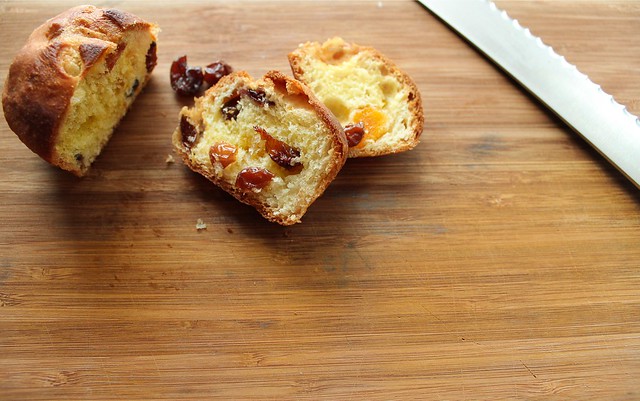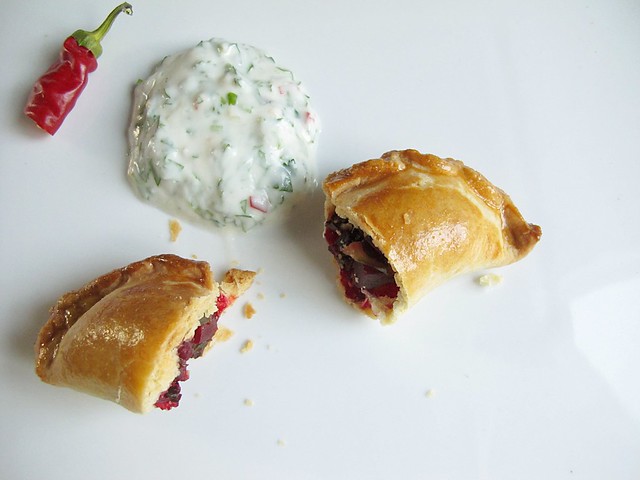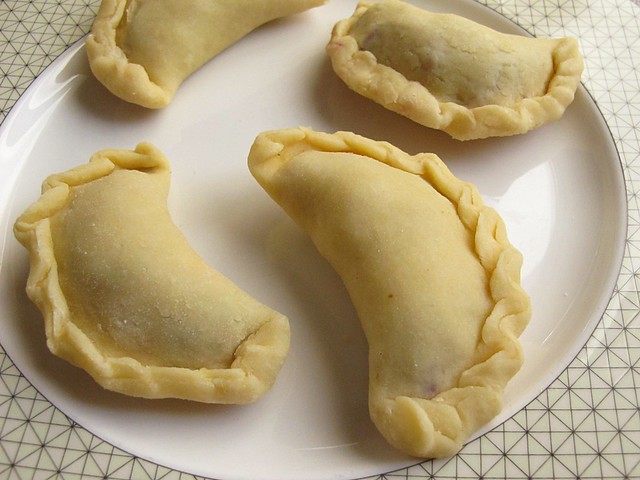Patri of the blog,
Asi Son Los Cosas, was our September 2012 Daring
Bakers’ hostess and she decided to tempt us with one of her family’s
favorite recipes for Empanadas! We were given two dough recipes to
choose from and encouraged to fill our Empanadas as creatively as we
wished!
I thought about this challenge a long while before actually beginning. Our challenge was actually for the empanada gallega, which is technically more of a "casserole style" empanada. But as I watched lots of Spanish-language YouTube videos of women folding the empanada dough deftly around fillings, I knew that I really wanted to try the individual, hand held empanadas instead. I read over many recipes for doughs, noting that there were differences in those destined to house fried pastries and those for baked.
Then, I had my first actual phone conversation with
Deena - who I met in person this Summer, but I still somehow considered an "Internet friend" only. All of a sudden, she felt like a real friend, someone to discuss food on the phone with. I found myself wishing I still had the long, spiral-corded wall phone in my kitchen, the one that was easier to balance on your shoulder when doing the dishes and chatting. She told me about the blog
Laylita's Recipes, (after we talked about, and I remembered,
these emapanda-related tuna and cauliflower versions that she made) and all of a sudden I was knew exactly what kind of empanada I would make, those filled non-traditionally with beets, Swiss chard, and goat cheese.

I haven't made empanadas before. I have made
pasties, which are somewhat related - as are most pastry wrapped half-moons, I suspect. To all of our neighbors south of us here in North America, emapanadas are an almost everyday food, a good way to use up a bit of leftover meat and veg (or even just cheese) in a maybe not so wholesome way, but in a very satisfying one nonetheless.
I think the reason it was so easy for me to decide on beet empanadas is because the wholesomeness quotient was certainly raised by using such high-nutrient vegetables as beets and chard. I knew I'd be eating these alone, so I made just enough for me (and froze most of my dough rounds for another day). I allowed enough extra filling to make a pizza for myself a couple of days later, and I just ate the last 1/4 c. of filling for lunch today alongside the last of my toasted rye bread and some salty Amish Swiss cheese.
Making the filling is easy: just saute some garlic and onion in butter or oil until softened somewhat, add a few leaves of finely chopped chard and some salt and pepper and cook it down until wilted. Add to a waiting bowl of (roasted, cubed) beets, cool slightly, and crumble in enough fresh goat cheese to satisfy you. The secret ingredient is some fresh oregano added after the cooking. My goat cheese was a
widely available brand with peppadew peppers in it. (Laylia's recipe is
here.)
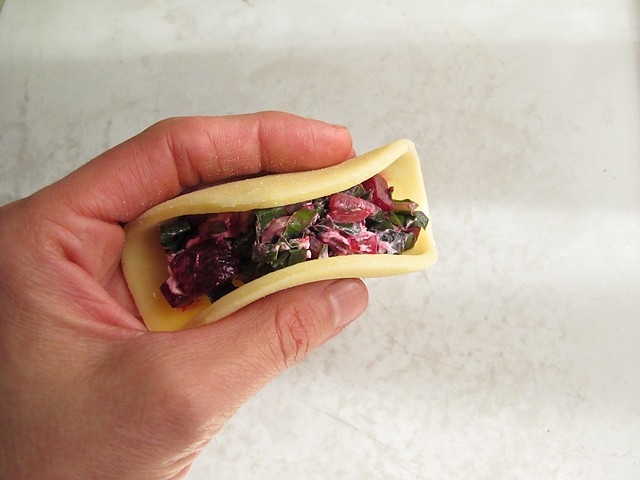
The dough we were provided for the challenge was a yeasted dough, but I wanted a quicker dough, with some fat but not so much that the pastries felt greasy. Since I was so excited about Laylita's Recipe blog, I decided to just try
her dough as well. A full 6 oz. of butter was perhaps more than I though necessary for a "healthier" empanada, but I decided I wanted to splurge. After all, I've never made empanadas before... and it felt like a bit of a celebration. I rolled the dough to about 1/8 of an inch thick, which felt a little on the fat side, but I saw why as I began to fold the edges.
I moistened the edges of the dough with water and pinched them together as I saw in so many videos. After pinching, which really flattens the outer edge, you start back at the beginning and fold a crimp down the length of the curve. (
Here is a favorite video, you can see her folding over the crimp at 2:35.) By the fourth try, I had it down, and that one was easily the prettiest one of the bunch. It's the one on the lower right:
Laylita recommends filling the empanadas, then letting them chill for 30 minutes prior to baking.
I made (and ate in one sitting, mind you) just 4 empanadas, technically empanaditas since they were a scant four inches across. I even baked them efficiently in my little toaster oven. After brushing them with a beaten egg, I beat another egg and that's what my son ate for dinner. As they baked, I quickly made a sauce, also based on
how Laylita ate hers. To some whole milk yogurt, I added some minced garlic, a whole fresh cayenne pepper from my garden, a large handful of minced cilantro, lime juice and some salt and pepper. The spicy dipping sauce was what made eating them feel more like a meal and not just a snack.
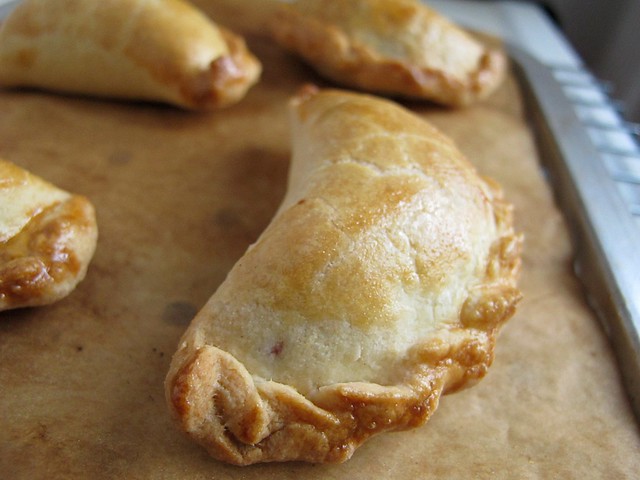
I ran out of time to make another, more independently inspired batch of emapandas. I do have two very small leeks and some ancho peppers from my garden, still sitting out on the counter. I intended to have them sauteed and added to some cheese to fill 4 more rounds that still sit well covered in plastic in my fridge. Maybe tomorrow. I also saved the scraps from cutting out the dough rounds and rolled a single 7-8 inch round that I thought I could top a pot pie with... but there is just so much appetite in a week! Fortunately, pastry dough does tend to keep well under refrigeration for several days, and in the freezer even longer. I'd say that the 6 oz. of butter is going a long way as well.
Be sure to have a look at the Daring Baker
blogroll for other empanada inspirations, and at the
original recipes that Patri provided us! Even if I (once again) didn't follow instructions, I had a great time making something I've never made before!


